Why We Can't Quit Royal Christmas Movies
they have everything we love: cocoa, crowns, and clichés
The holiday season isn’t complete without twinkling lights, steaming mugs of cocoa, and, of course, a royal rom-com marathon. Every year, Netflix, Hallmark, and Lifetime reliably deliver a glittering parade of crown-adorned Christmas tales. Plucky commoners melt the hearts of uptight princes, and snow seems to fall on cue for every climactic kiss.
Sure, they’re predictable. Sure, they defy logic (how many obscure, vaguely-Bavarian, English-speaking European monarchies can there be?). But that’s exactly why we love them.
Let’s explore the love affair between Christmas and royal tropes—and why we’re seated every year for each snowy, sappy second.
The Commoner Effect
Let’s face it: the backbone of every royal Christmas movie is the female commoner protagonist. She’s quirky, hardworking, maybe a little cynical about love—but never too cynical to save Christmas and catch the prince’s eye. Why this specific trope? It’s all about the self-insert fantasy.
These festive fairytales invite female audiences to imagine themselves as the heroine—swept into a glittering world where tiaras replace student loans and true love transcends class divides. She’s relatable yet aspirational—perfectly poised to live out every “what if” scenario.
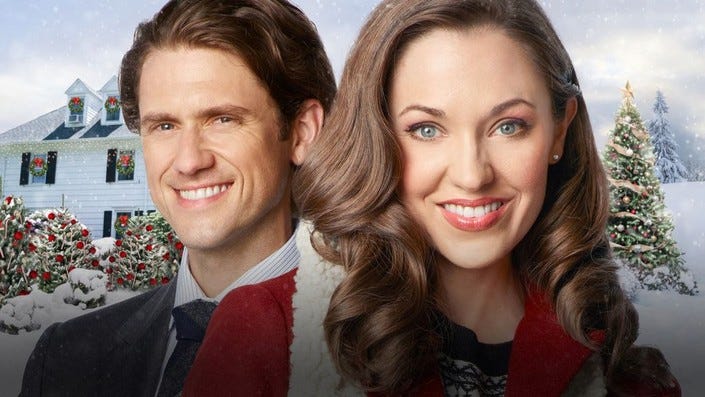
These movies lean into the universal lure of being plucked from ordinary, modern life and thrust into an extraordinary love story. They offer, at their core, a sparkling escape from the mundane. The female lead often works in a small-town diner, runs a struggling family business, or is the assistant to a demanding boss (sometimes all three), and these roles feel familiar and accessible to the audience. Her relatability makes it easy for the average, middle-American woman to picture herself in her shoes. We would surely be wandering wide-eyed, the same way our heroine does, through a palace if given the opportunity. Exchanging longing glances with a handsome prince over a tray of pristine sugar cookies just brings the fantasy element home.
Prince Charming (On Ice)
The prince in these royal Christmas movies is usually the classic "reluctant heir." He’s duty-bound, stoic, and a little emotionally closed off at the start—often in need of the heroine to remind him of the magic of love and life outside royal expectations. What luck!
Beneath his polished exterior, there’s always a sense of loneliness or internal conflict—he’s caught between his obligations to the crown and his desires for personal happiness. By the end of the movie, though, his transformation is underway: he is learning to prioritize love and happiness over (or in tandem with) his royal duty. Can’t have him throwing away his place in the line of succession, lest the heroine not get her reward!

The Christmas prince is the embodiment of the idea that even the haughtiest of royalty can use a little holiday magic to soften their heart.
Meet the Parents
Ah, family—no less messy for the royals than for us commoners. Royal holiday flicks make use of family structures that are just as predictable as the central romantic pairings, and they add artful secondary drama to every plot.
First, the parents, who are the emotional anchors that add depth (and, often, conflict and drama) to the story. Often, each protagonist only gets one parent (the stores are picked over this time of year). The missing one has perished, off-screen, in some tragic and virtuous manner. A missing parent is almost a given in these movies—a hallmark of romantic storytelling that adds pre-built emotional depth.
The commoner’s parent(s) are usually down-to-earth, quirky, and a little skeptical of their child falling for a royal. Whether they’re baking cookies in a small-town kitchen or reminiscing about simpler times, they remind the heroine of her roots. They also serve as cheerleaders, urging her to follow her heart. The heroine may strive to honor their memory or carry on a cherished family tradition.
The prince’s parents, when they’re both in the picture, are typically divided. One is a stickler for royal tradition, resisting any romance that threatens the crown’s image. The other, softer and more romantic, secretly roots for love to conquer all. This dynamic creates tension while highlighting the stakes of choosing love over duty.

If we’re dealing with a single-parent monarchy, the absence of a parent for the prince further amplifies the weight of his royal duties. He’s left navigating traditions with an incomplete support system. This loss creates room for the love interest to fill an emotional void, making their connection even more compelling. Again, the parent’s memory is primed to be honored through holiday traditions.
The Next-Gen Female Royal
To amplify the familial element and flesh out our protagonists, there's always a younger female relative of the prince thrown in. Why is that?
Usually taking the form of a sister, niece, or precocious cousin, the younger female relative, serves multiple purposes in these movies. Not quite mature, she’s the prince’s emotional anchor, offering insight into his softer, more vulnerable side. Through her playful banter or heartfelt encouragement, the audience sees the royal love interest not just as a stuffy aristo, but as a caring, relatable figure.
The female relative also serves as a plot device to break the ice between the prince and the commoner heroine. Whether it’s by orchestrating an “accidental” meeting or advocating for the heroine to stay in the palace longer, she becomes the matchmaker who pushes the romance forward. Plus, her youthful optimism and holiday cheer often add a touch of whimsy to the story, balancing out any lingering royal stuffiness.
The Uptight Advisor
Often, the first face our heroine meets after touching down in Aldovia or Pokovia or Ancadia (why is it always a -via?) is the uptight royal advisor. The perpetual thorn in everyone’s side, this character exists to embody the rigid traditions of the monarchy, constantly reminding the prince of his duty and looking down their nose at the commoner heroine’s every move. They often hover in the background with furrowed brows, issuing dire warnings about “protocol” and the “reputation of the crown.”
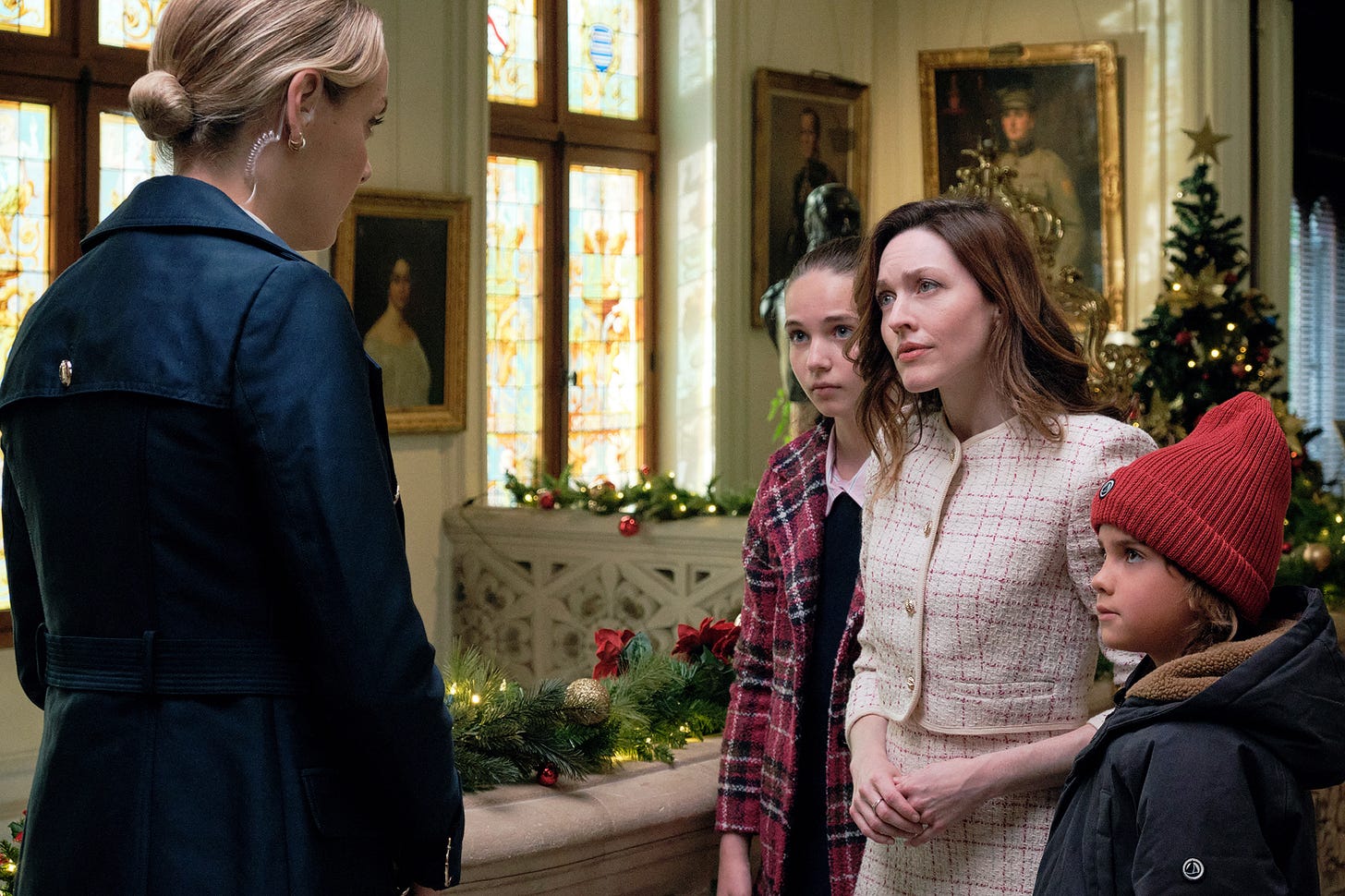
Sometimes they are supportive…and sometimes not. The royal advisor often swings between two extremes: either they’re staunch traditionalists who fiercely oppose the romance, or they’re unexpectedly supportive, offering sage advice that helps the couple navigate their challenges.
In some films, the advisor starts off cold but gradually warms to the commoner, recognizing her authenticity as a positive influence on the prince.
In others, withstanding the heroine’s warmth and cheer, they remain steadfast antagonists; they double down on tradition until the very end (when they are sometimes launched unceremoniously into a snow bank). By opposing the romance, they often make the ultimate union feel even more victorious—proof that love can conquer even the stiffest of royal protocols.
The advisor’s presence always underscores the high stakes of defying royal expectations—and makes the eventual happy ending even sweeter. Their role isn’t just to create tension, but also to amplify the stakes.
Threats to the Happy Ending
The royal romantic rival is another staple of these films, often cast as the aristocratic fiancée, a polished noblewoman, or a longtime family friend harboring unrequited (if encouraged by the parents) love for the prince. She’s the epitome of royal perfection: polished, glamorous, and fully aligned with the traditions of the monarchy. She also knows her place. But herein lies the problem—her “perfection” contrasts sharply with the relatable authenticity of the commoner heroine.
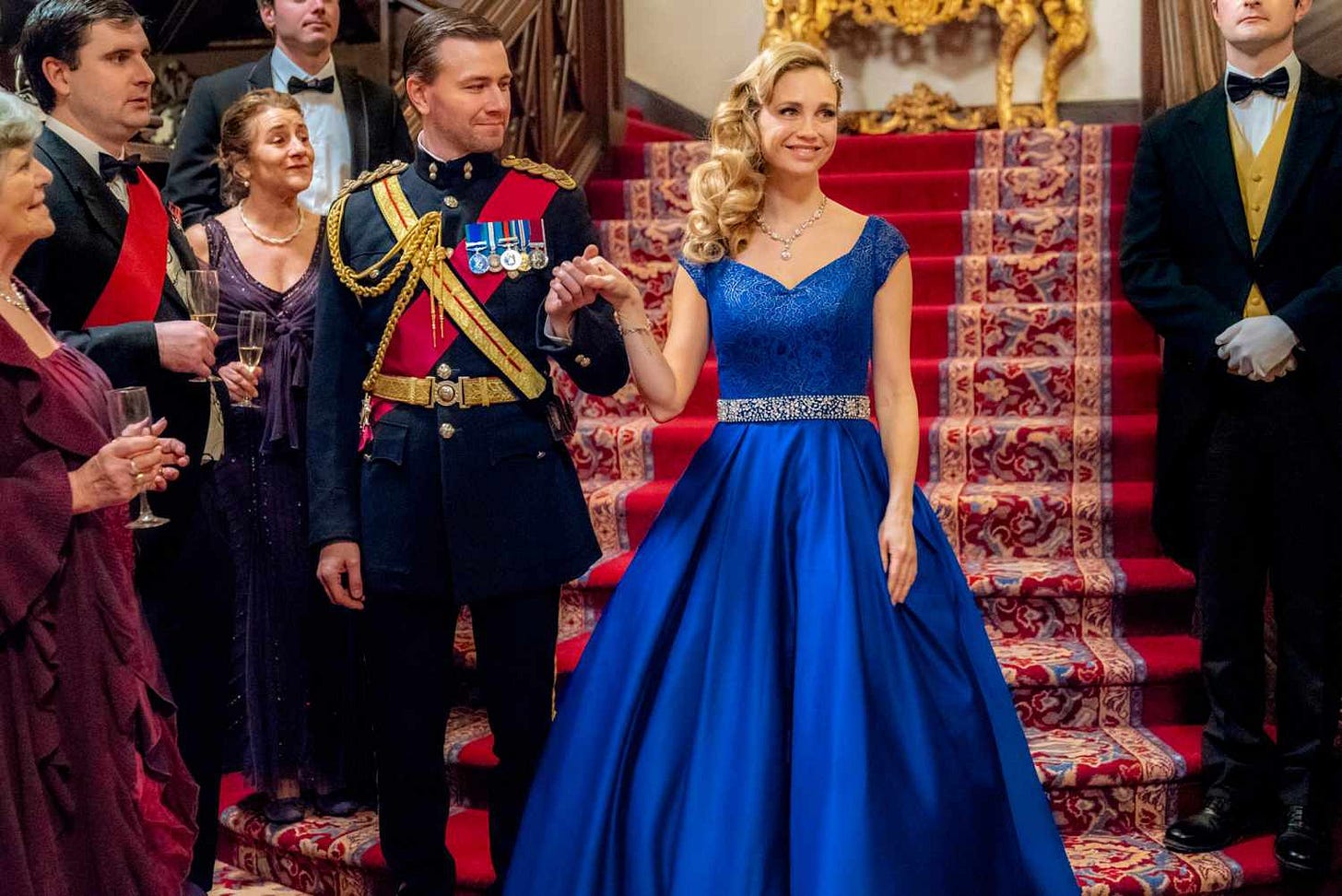
Her role isn’t just to create tension; she highlights what the prince doesn’t want: someone rigidly tied to royal conventions. Instead, he craves the warmth and individuality of the outsider. Often, the rival is left standing at the altar—or with a convenient new love interest—once the prince inevitably chooses love over duty.
Then there’s the “threat to tradition,” the dramatic backbone of every royal Christmas movie worth its salt. Whether it's the monarchy itself, a cherished family custom, or the ~magic of Christmas~ in general, there’s always something on the brink of collapse in a royal rom-com. This looming danger—be it a scandal or a stalled-out modernizing reform—raises the stakes for our star-crossed protagonists.
These threats serve as metaphors for the balance between change and tradition. The heroine champions progress, and she shows us how embracing new ideas doesn’t mean abandoning cherished values. Meanwhile, the prince inevitably learns to reconcile his royal duties with his personal desires, preserving the heart of the monarchy while opening himself to the future.
The resolution? A triumphant Christmas celebration that proves love (and tradition) can conquer all.
The Cinderella Moment (Christmas Edition)
Before the union can be sealed with a snowy kiss, we simply have to give our heroine a glamorous, princess-y debut. Her fairytale transformation—that moment where she sheds her humble roots and steps into the royal spotlight—signals that she’s ready to embrace both love and the limelight. She might also be having a Cinderella moment: a chance to feel and look beautiful as a reward for all her emotional labor.
This transition is often signaled by a dramatic wardrobe change that makes the heroine appear every bit a princess. Bonus points if her neck is left bare for the later addition of an heirloom necklace in the way of a Christmas gift from the prince.
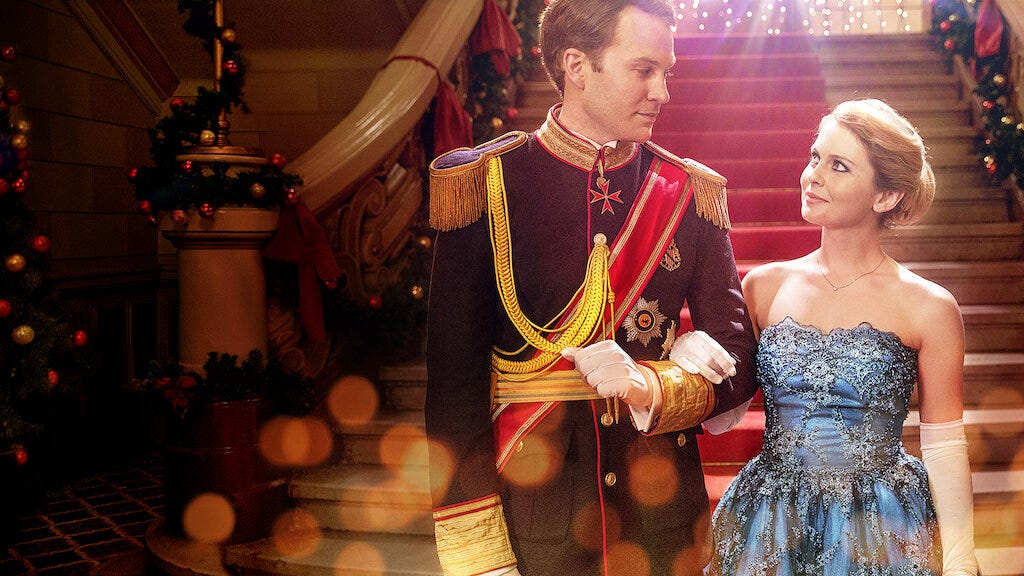
This “debut” tells the audience (and the royal court) that she’s not just the prince’s love interest anymore—she’s now a worthy companion in his royal world.
Why We Keep Falling for Holiday Royal Romance
We love these royal Christmas movies year after year because they offer a comforting escape from the chaos of real life. The predictability of the plot, the charming royalty, and the magical holiday setting create the perfect backdrop for a feel-good experience. These films let us live out our fantasy of being whisked away to a grand, well-decorated palace and falling in love with a prince who appreciates us for our authentic selves.
The appeal of these movies also lies in their emotional simplicity. In a world full of complexity, it’s refreshing to return to a storyline where love conquers all, and every challenge is resolved just in time for a Christmas kiss. It’s a formula that’s timeless, with just the right touch of holiday magic.
And this formula keeps getting produced because audiences have come to crave it. Some, like Netflix’s A Christmas Prince and The Princess Switch, even get greenlit for sequels. (Apparently, there’s also lore to the Netflix holiday universe. 🤯 These movies are all connected. Who knew?!)
In a time when many people enter the holiday season feeling disconnected or stressed, these movies provide a predictable and heartwarming narrative—a safe and joyful balm to the darkest month of the year. The blend of royalty, escapist romance, and the magic of Christmas is the perfect package. With each new movie and recycled plot, we’re reminded why we can’t resist returning to these fictional monarchies each holiday season.





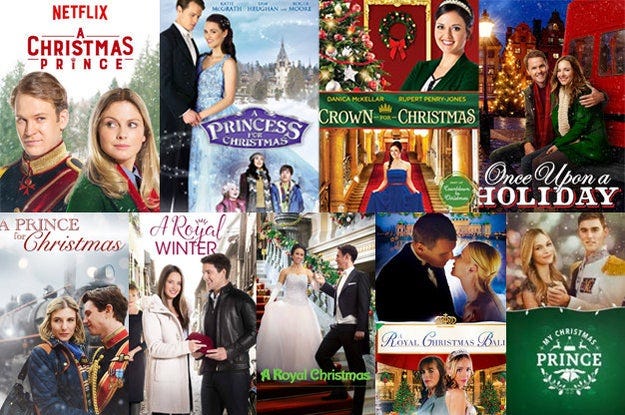

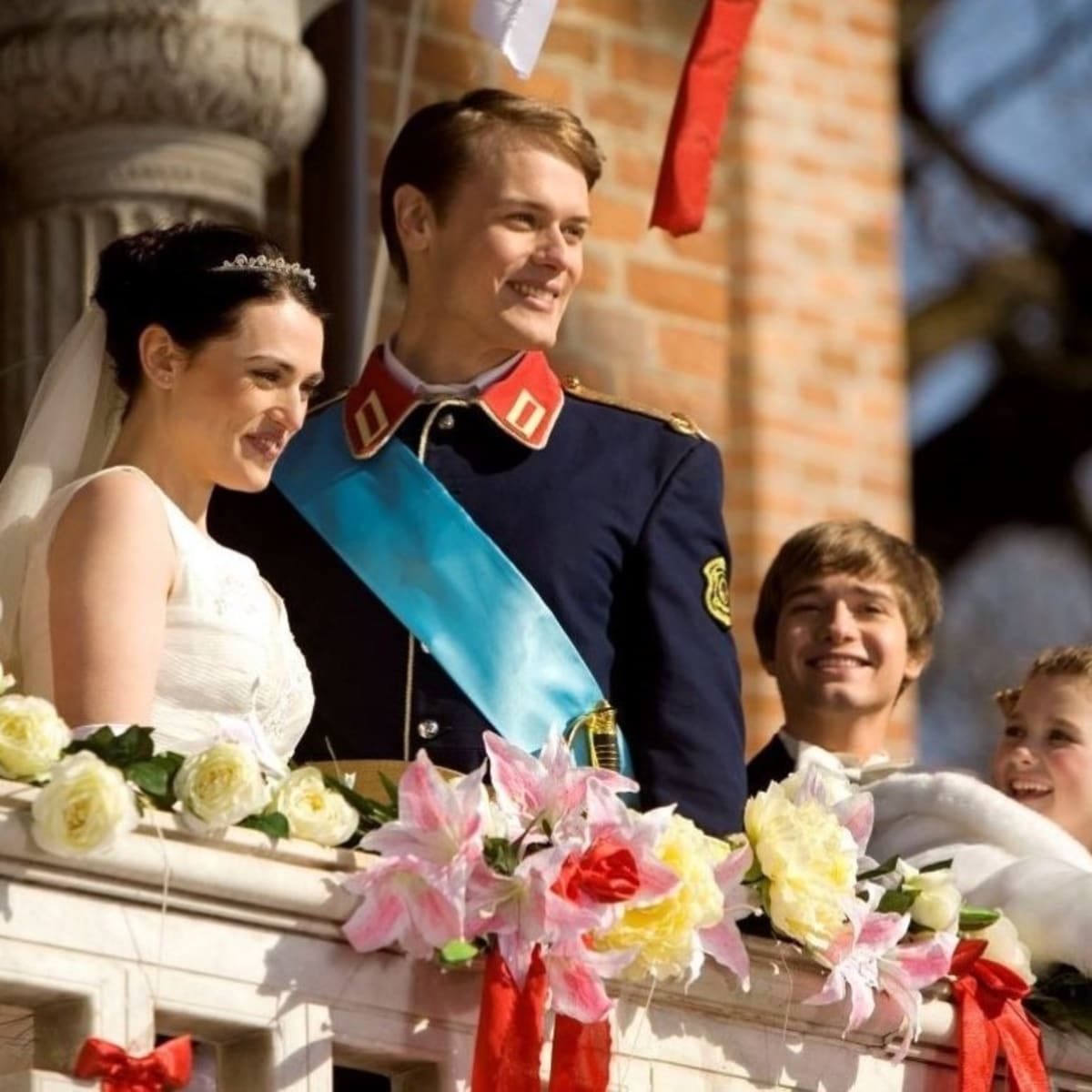
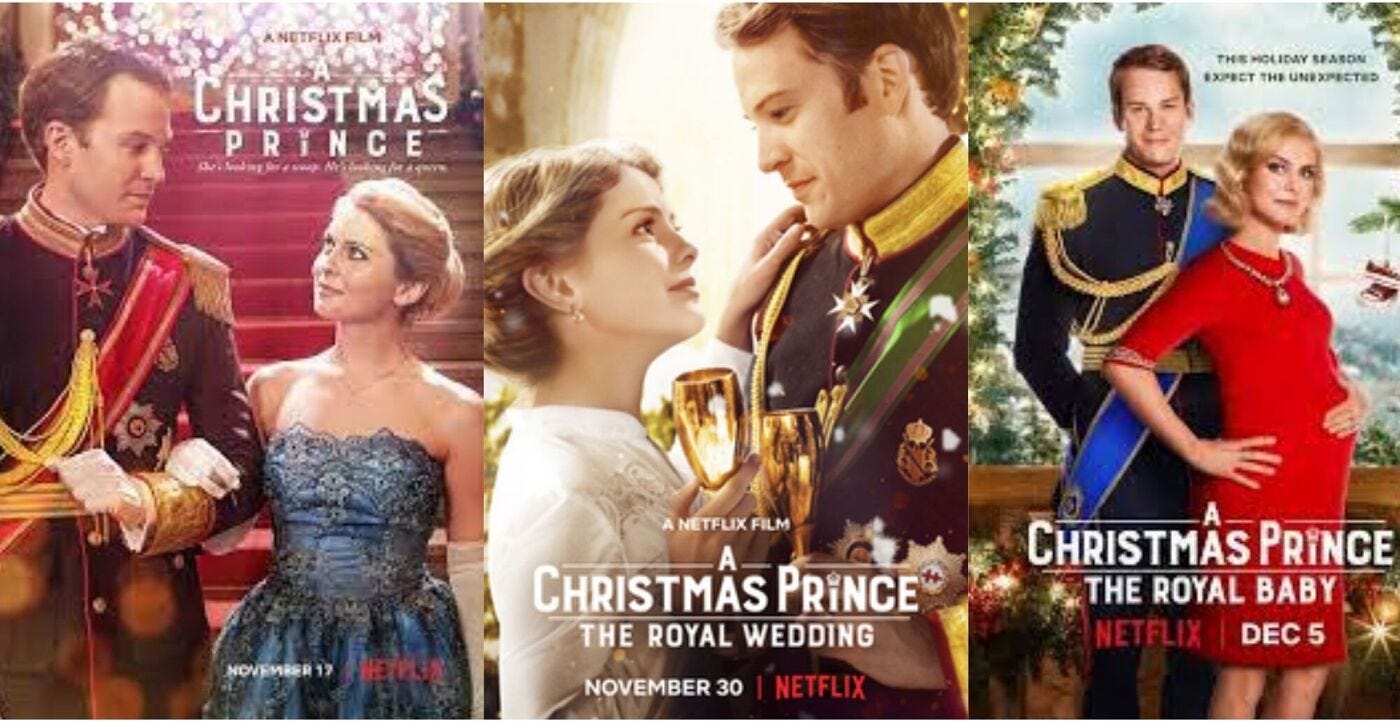

All I know is: the worse the real world seems, the more I'm drawn to tacky, trashy, unrealistic media that i can either shut my brain off during, or that I can make fun of MST3K style. Gimme those princess cartoons for grown ups, lol 😆
I’m Guilty of Hallmark style Christmas movie obsession. I love them for their entertainment, light hearted, positive nature. Yes they are cheesy and predictable but it is that predictability that endears these films and make them fit perfectly in with wrapping gifts, decorating or cooking and baking holiday treats.